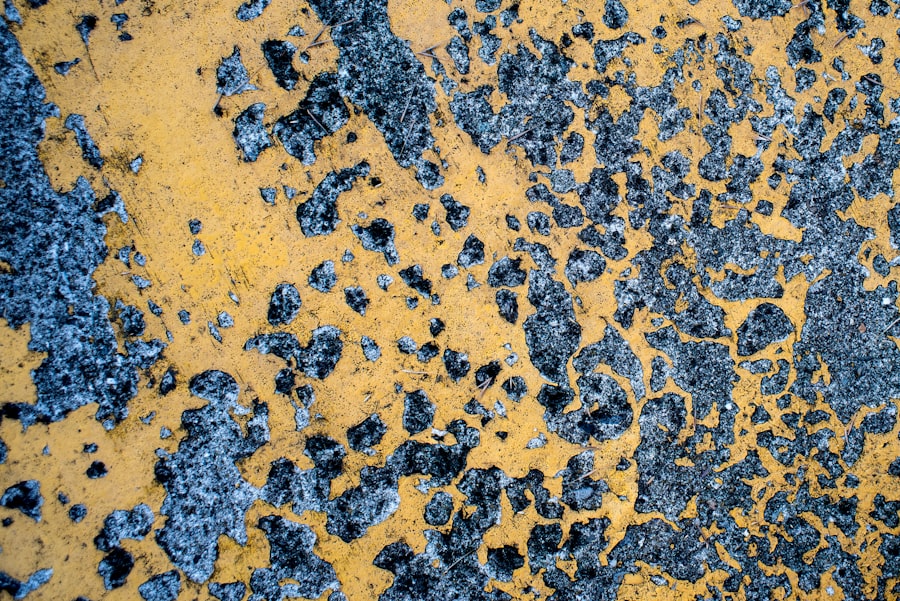
- By: admin
- Category: Commercial Floor Cleaning Machines
- 0 comment
In the bustling world of commercial cleaning, the significance of effective floor scrubbers cannot be overstated, particularly in wet environments. These machines are not merely tools; they are essential assets that ensure cleanliness, safety, and efficiency in various settings, from shopping centres to industrial warehouses. The ability to maintain pristine floors in areas prone to spills or moisture is crucial for both aesthetic appeal and operational functionality.
A well-maintained floor not only enhances the overall appearance of a facility but also contributes to a safer environment for employees and customers alike. Moreover, effective floor scrubbers play a pivotal role in maintaining hygiene standards, especially in sectors such as food processing, healthcare, and hospitality. In these industries, the presence of water can lead to slippery surfaces, increasing the risk of accidents.
By utilising advanced floor scrubbers designed for wet environments, businesses can mitigate these risks while ensuring that their floors are not just clean but also hygienically safe. This dual focus on cleanliness and safety underscores the importance of investing in high-quality commercial floor scrubbers tailored for wet conditions.
Summary
- Effective commercial floor scrubbers are crucial for maintaining clean and safe wet environments in commercial settings.
- Cleaning wet floors in commercial settings presents unique challenges that require specialised equipment and techniques.
- When choosing commercial floor scrubbers for wet environments, look for features such as high water lift capacity to ensure efficient cleaning.
- Floor scrubbers with high water lift capacity offer advantages such as faster drying times and improved productivity in wet environments.
- Selecting the right brushes and pads, as well as understanding the role of squeegees, is essential for effective cleaning of wet floors in commercial settings.
Understanding the Challenges of Cleaning Wet Floors in Commercial Settings
Cleaning wet floors in commercial settings presents a unique set of challenges that require specialised equipment and techniques. One of the primary issues is the accumulation of water, which can create hazardous conditions if not managed properly. Wet floors can lead to slips and falls, posing significant risks to both employees and customers.
This necessitates a cleaning approach that not only addresses the visible dirt but also effectively removes excess moisture to prevent accidents. Additionally, the presence of water can complicate the cleaning process itself. Traditional mopping methods may leave behind residual moisture, which can attract dirt and grime, leading to a cycle of ineffective cleaning.
In contrast, commercial floor scrubbers are designed to tackle these challenges head-on. They provide a thorough clean while simultaneously extracting water, ensuring that floors are left dry and safe for foot traffic. Understanding these challenges is crucial for facility managers and contract cleaners who aim to maintain high standards of cleanliness and safety in their operations.
Key Features to Look for in Commercial Floor Scrubbers for Wet Environments

When selecting a commercial floor scrubber for wet environments, several key features should be considered to ensure optimal performance. Firstly, water lift capacity is paramount; a machine with high water lift capability can effectively remove excess moisture from surfaces, reducing drying times and enhancing safety. This feature is particularly important in environments where spills are frequent or where water accumulation is common.
Another critical aspect is the type of brushes or pads used by the scrubber. Different surfaces require different cleaning approaches; therefore, having adjustable brush pressure and interchangeable pads can significantly enhance cleaning efficiency. Additionally, look for machines with robust filtration systems that can handle debris and contaminants without clogging, ensuring consistent performance over time.
These features collectively contribute to a scrubber’s effectiveness in wet environments, making them indispensable tools for commercial cleaning operations.
The Advantages of Using Floor Scrubbers with High Water Lift Capacity
| Advantages | Description |
|---|---|
| Efficient Cleaning | High water lift capacity allows for effective removal of dirt and grime from floors. |
| Time-saving | With powerful suction, floor scrubbers can complete cleaning tasks in less time. |
| Improved Safety | Reduced risk of slip and fall accidents due to thorough cleaning and faster drying times. |
| Enhanced Hygiene | High water lift capacity ensures better removal of contaminants, leading to a cleaner and healthier environment. |
| Cost-effective | Reduced water and chemical usage, as well as labour costs, due to efficient cleaning performance. |
Floor scrubbers equipped with high water lift capacity offer numerous advantages that can greatly enhance cleaning efficiency in wet environments. One of the most significant benefits is the reduction in drying time. When excess water is effectively extracted from the floor surface, it allows for quicker turnaround times between cleaning and reopening areas for foot traffic.
This is particularly beneficial in high-traffic commercial spaces where downtime can lead to lost revenue. Moreover, high water lift capacity contributes to improved safety by minimising the risk of slips and falls. Wet floors can be treacherous, especially in busy environments where people are constantly on the move.
By utilising scrubbers that excel in water extraction, facility managers can create safer working conditions while also maintaining a clean appearance. This dual benefit not only enhances operational efficiency but also fosters a culture of safety within the workplace.
Choosing the Right Brushes and Pads for Cleaning Wet Floors
Selecting the appropriate brushes and pads for cleaning wet floors is crucial for achieving optimal results. Different surfaces require different types of brushes; for instance, softer brushes may be more suitable for delicate flooring materials like vinyl or polished concrete, while stiffer brushes can effectively tackle tougher surfaces such as tile or epoxy coatings. Understanding the specific needs of each surface type will help ensure that the cleaning process is both effective and gentle on the flooring.
Additionally, the choice of pads plays a significant role in the overall cleaning performance. Microfibre pads are often recommended for their ability to trap dirt and moisture effectively while being gentle on surfaces. Conversely, scrubbing pads with abrasive properties may be necessary for heavy-duty cleaning tasks where stubborn stains or grime are present.
By carefully considering the right combination of brushes and pads, commercial cleaners can maximise their efficiency and achieve superior results in wet environments.
The Role of Squeegees in Ensuring Effective Cleaning in Wet Environments

Squeegees are often an overlooked yet vital component of effective cleaning in wet environments. While floor scrubbers do an excellent job of removing dirt and moisture from surfaces, squeegees play a crucial role in ensuring that any remaining water is efficiently removed from the floor. This is particularly important in areas where water tends to pool or accumulate after scrubbing.
Incorporating squeegees into the cleaning process not only enhances drying times but also helps prevent water from seeping into cracks or crevices where it could cause damage over time. Furthermore, using squeegees can significantly improve safety by reducing residual moisture on floors, thereby minimising slip hazards. For commercial cleaners and facility managers, understanding the importance of squeegees as part of a comprehensive cleaning strategy is essential for maintaining both cleanliness and safety in wet environments.
Maintenance Tips for Commercial Floor Scrubbers in Wet Environments
Proper maintenance of commercial floor scrubbers is essential to ensure their longevity and optimal performance, especially when used in wet environments. Regularly inspecting and cleaning components such as brushes, pads, and squeegees will help maintain their effectiveness and prevent wear and tear. It’s advisable to follow manufacturer guidelines regarding maintenance schedules to keep machines running smoothly.
Additionally, paying attention to the scrubber’s water filtration system is crucial. Clogged filters can hinder performance and lead to inefficient cleaning results. Regularly checking and replacing filters as needed will ensure that the machine operates at peak efficiency.
By implementing these maintenance tips, facility managers can extend the lifespan of their floor scrubbers while ensuring they deliver consistent results in challenging wet conditions.
The Impact of Drying Time on Productivity in Wet Environments
Drying time is a critical factor that directly impacts productivity in wet environments. In commercial settings where foot traffic is high, prolonged drying times can lead to disruptions in operations and increased risk of accidents due to slippery surfaces. Therefore, utilising floor scrubbers with efficient water extraction capabilities can significantly reduce drying times, allowing areas to be reopened more quickly after cleaning.
Moreover, minimising drying time enhances overall workflow efficiency. Employees can return to their tasks sooner without having to navigate around wet areas or wait for floors to dry completely. This not only improves productivity but also contributes to a more organised and professional appearance within the facility.
For contract cleaners and facility managers alike, understanding the relationship between drying time and productivity is essential for optimising operations in wet environments.
Considerations for Safety and Ergonomics in Wet Floor Cleaning
Safety and ergonomics should always be at the forefront when it comes to cleaning wet floors in commercial settings. The risk of slips and falls is heightened when working with wet surfaces; therefore, it’s essential to implement safety measures such as clear signage indicating wet areas and using appropriate personal protective equipment (PPE). Additionally, training staff on safe cleaning practices can further mitigate risks associated with wet floor cleaning.
Ergonomics also plays a significant role in ensuring that cleaning tasks are performed safely and efficiently. Floor scrubbers designed with user comfort in mind can help reduce strain on workers’ bodies during operation. Features such as adjustable handles, lightweight designs, and intuitive controls make it easier for operators to manoeuvre machines without risking injury.
By prioritising safety and ergonomics, businesses can create a safer working environment while enhancing overall productivity.
Case Studies: Successful Implementation of Commercial Floor Scrubbers in Wet Environments
Examining case studies of successful implementations of commercial floor scrubbers in wet environments provides valuable insights into best practices and outcomes achieved by various organisations. For instance, a large shopping centre faced challenges with maintaining clean floors due to frequent spills from food courts and high foot traffic areas. By investing in advanced floor scrubbers with high water lift capacity and efficient squeegee systems, they were able to significantly reduce drying times while improving overall cleanliness.
Another example involves a manufacturing facility that struggled with maintaining hygiene standards due to wet conditions caused by production processes. After implementing specialised floor scrubbers designed for industrial use, they reported a marked improvement in both cleanliness and safety levels within their facility. These case studies highlight how strategic investments in commercial floor scrubbers can lead to enhanced operational efficiency and improved safety outcomes across various industries.
Future Trends and Innovations in Commercial Floor Scrubbers for Wet Environments
As technology continues to evolve, so too do the innovations surrounding commercial floor scrubbers designed for wet environments. One notable trend is the integration of smart technology into these machines, allowing for real-time monitoring of performance metrics such as water usage and cleaning efficiency. This data-driven approach enables facility managers to make informed decisions regarding maintenance schedules and operational improvements.
Additionally, advancements in battery technology are paving the way for more powerful yet energy-efficient floor scrubbers that can operate longer without needing frequent recharges. This not only enhances productivity but also aligns with sustainability goals by reducing energy consumption during cleaning operations. As these trends continue to develop, businesses will have access to increasingly sophisticated tools that enhance their ability to maintain clean and safe environments in wet conditions.
In conclusion, effective commercial floor scrubbers are indispensable tools for maintaining cleanliness and safety in wet environments across various industries. By understanding the challenges associated with cleaning wet floors and selecting machines equipped with key features such as high water lift capacity and appropriate brushes or pads, facility managers can optimise their cleaning operations while ensuring a safe environment for all users.
